STUDENT WITH NO STYLE HERE TO MAKE CHANGE CHA CHA REAL SMOOTH
From YouTube clothing hauls to Instagram style influencers, fashion is an intrinsic part of the Gen Z cultural landscape. And although it is beautiful to watch my generation experiment with clothes, I can’t help but feel left out.
>> read more on page 07
Random House Canada published her memoir Toufah: The Wom an Who Inspired An African #MeToo Movement. In the book, as she does in life, Jallow takes a stand against rape culture to voice the experiences of women who would otherwise remain unheard.
>> read more on page 11
Cha Cha Real Smooth was nominated for the “Grand Jury Prize”—the most prestigious award at the 2022 Sundance Film Festival. It was also nominated for and ultimately won the “Audi ence Award,” putting it on everyone’s radar.
>> read more on page 14
UTM reveals 2022 Annual Research Prizes winners
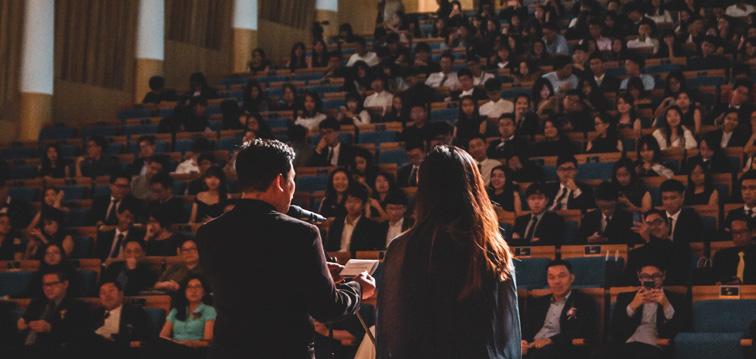 Mari Khan Contributor
Mari Khan Contributor
The University of Toronto Mississauga’s Annual Research Prizes are awards given to “early career faculty members” who have made significant impacts in their field through their research. One recipient is chosen from each of the three categories: sciences, so cial sciences, and humanities. Prize recipients are granted $2000 as a reward. The recipients this year are Associate Professor Loren Martin from the Department of Psychology, Assistant Professor Ali son Smith from the Department of Political Science, and Associate Professor Daniel Wright from the Department of English & Drama.
>> WINNERS continues on page 04
OPINION
Alpha-male influencers are the poster boys
day misogyny
Angelina Jaya Siew Staff Writer
Alpha-males are men at the pinnacle of the socio-sexual pyramid who view themselves as natural leaders. They strive to be successful, con fident, intelligent, and can be aggressive. People want to either be them or be with them.
With the growing popularity of social media platforms such as Insta gram and TikTok comes the proliferation of toxic influencers that em brace this “alpha-male lifestyle.” Casually scrolling through TikTok, I am bombarded with videos of brazen men and their bulging muscles who often objectify women and preach about what an ideal male is supposed to be: dominant, psychically strong, and wealthy.
Andrew Tate is the epitome of a toxic alpha-male influencer. Tate spreads misogynistic messages to vulnerable Gen Z males on social me dia. With his videos reportedly garnering a whopping 11.4 billion views, and his name having more Google searches than Donald Trump or Kim Kardashian in July, Tate has made a lasting negative impact on men across the world with his toxic remarks about male superiority and his complete disregard for gender equality.
>> MISOGYNY continues on page 09
NEWS
Kathleen Xu Contributor
The Public Health Agency of Canada’s November 5, 2022, Respiratory Virus Report, revealed a steep increase in respiratory viral infections in recent weeks. According to the report, “Influenza activity is above the seasonal threshold of 5 per cent of tests positive,” reach ing 11.7 per cent test positivity rate, which suggests that a nationwide influenza epidemic has started. Simultane ously, Canada is dealing with mounting respiratory syn cytial virus (RSV) infections and the continuation of the Covid-19 pandemic.
RSV causes infections with symptoms similar to those of a regular cold, including coughing, sneezing, and a runny nose. The Public Health Agency of Canada states that RSV infections are higher than expected for this sea son. Influenza is another respiratory virus that spreads every year during colder months. The Centers for Dis ease Control and Prevention describes flu symptoms as “more intense” and more sudden than cold symptoms.
The Medium spoke with immunologist and U of T professor, Tania Watts, about the triple wave of viruses this winter.
“Influenza is a virus, which is always with us because there’s a large reservoir in wild birds,” says Watts as she goes over the longstanding history of the flu. “Periodi cally, some of these get into humans, usually through an intermediate such as swine, which can be infected by both avian flu and human flu.”
According to Watts, the flu and the RSV were sup pressed during the previous two years due to lockdowns and masking measures. She explains that these measures were vital in protecting populations from Covid-19, but delayed exposure to RSV and influenza, particularly in children.
For most people, getting infected by such viruses re sults in mild sickness. However, the three viruses carry serious risks for vulnerable populations, such as the el derly, the immunocompromised, and especially children.
“It’s mainly infecting the very young who’ve never been exposed, so that first infection is worse,” states Watts.
The Independent Student Newspaper of the University of To ro nto Mississauga since 1974 themedium.ca Issue 10 Volume 49 November 21 2022
NEWS
of modern-
>> INFLUENZA continues on page 02
Influenza epidemic begins in Canada alongside rising RSV infections and the Covid-19 pandemic
Influenza epidemic begins in Canada alongside rising RSV infections and the Covid-19 pandemic

As temperatures drop and children’s cold medicine faces supply shortages, increasing prevalence of respiratory diseases spurs experts to recommend vaccination, masking, and avoiding crowds.
Kathleen Xu Contributor
>> INFLUENZA continued from page 01
Older citizens lose immunity with age, and as such, are also susceptible to the viruses.
Pediatric hospitals across Ontario are facing overwhelming numbers of patients because of the three viruses, partly due to low availability of children’s cold medicine. Many hospitals are operating over capacity and have been forced to reduce the number of surgeries.
To address the shortage of over-the-counter medicine, Health Canada announced on November 14 that shipments are incoming and distribution of medication has commenced. This includes a shipment of children’s acetaminophen that will become available in stores in the weeks to come.
Regarding the maintenance of public health safety, Watts advocates for vaccination—especially for children, due to the possibility of unknown mutations within their immune sys tems, placing them at risk. “Anytime there’s a new infection, certain people have genetic vulnerabilities, and we don’t know who they are,” says Watts.
Additionally, she believes masking and limiting contact with
big crowds can help Canadians stay safe this winter. She advises people to consider “the length of time [spent indoors] and how well the place is ventilated,” and to wear masks in larger public areas such as schools and universities.
Health officials across Canada, including Ontario’s chief medical officer, Dr. Kieran Moore, have urged citizens to stay vigilant and wear masks. Regardless, as of November 20, 2022, mask mandates have yet to be reinstated.


Canada looks to immigration to address ongoing labour shortage
Zitong Chen Contributor
As Canada recovers from the Covid-19 pandemic-induced downturn, the econ omy faces the key problem of labour short age. In response to this, on November 1, 2022, Minster of Immigration, Refugees and Citi zenship, Sean Fraser, released Canada’s 20232025 Immigration Levels Plan
The plan introduces immigration of skilled workers and talents as a remedy to acute la bour shortages faced by certain sectors, such as healthcare, manufacturing, and trades. The government aims to welcome “465,000 per manent residents in 2023, 485,000 in 2024, and 500,000 in 2025.” Moreover, the plan also focuses on economic growth and regional im migration—where the government entices im migrants to settle in rural areas.
Philip Oreopoulos, professor of economics and public policy at U of T, highlights room for improvement in the immigrant evalua
tion process. For instance, during the immigration applica tion, Oreopoulos points out that “immigrants are evaluated based on having a four-year degree, regardless of where that degree is from, and what field of study.” He extends that applications would be “better evaluated” on the candidate’s ability to adapt to the “Canadian labour market, based not only on their degree, but their grades and the qual ity of degree.” Additionally, Oreopoulos states that skilled immigrants would benefit from improved services in helping them secure em ployment.
Associate professor at U of T’s Department of Political Science and the Munk School of Global Affairs and Public Policy, Michael Donnelly, believes it is beneficial for Canada to let in more immigrants, but there are chal lenges as well. “One of the big challenges is that [...] rules around qualifications for spe
cific occupations are made provincially, and often made not di rectly by government policy, but by various agencies, boards, and professional organiza tions,” says Donnelly. He explains that such professional organizations do not have the incentive to ensure all quali fied immigrants are given jobs. As a result, im migrants’ work experiences and training can be misaligned with what they are allowed to do in Canada.
In terms of the controversial discussion about whether new immigrants fit into Cana dian society, Donnelly holds a positive view on the matter. “A multi-cultural society like Canada has lots of different groups who live different ways, and their cultures are not all the same—I think that’s a good thing,” states
Donnelly, pointing out that there are countries where there is forced integration, and people are pressured to behave like natives. “There certainly are some challenges that come with having different cultures and beliefs living side-by-side, but I think the benefits clearly outweigh the costs,” he continues.
Furthermore, Donnelly provides a new per spective on assisting immigrants in securing jobs, stating: “I think allowing more housing to be built in the hottest labour markets will help a lot.” He emphasizes that new immigrants are troubled by the problem of housing—often times, where they can afford to live is either in over-crowded places or far from the city cen tre. “If you allow more constructions through out the city […] or throughout any place close to transit, you will make it much more possible for people to get into the labour market quick ly,” states Donnelly.
The federal immigration plan brings many opportunities, though it is limited by the gov ernment’s implementation. “The bureaucracy is having genuine trouble getting things done,” says Donnelly.
02 NEWS Editor | Larry Lau news@themedium.ca
The Canadian government aims to introduce skilled workers to industries facing labour shortages, though housing problems, inadequate immigrant evaluation process, and government inefficiency pose challenges to the immigration plan.
KIRSTY MACLELLAN/THE MEDIUM
Interest rates rise as Bank of Canada strives to curb inflation

In its most recent monetary policy report, the Bank of Canada outlines its plans to address high inflation and forecasts the state of the Canadian economy for the upcoming years.
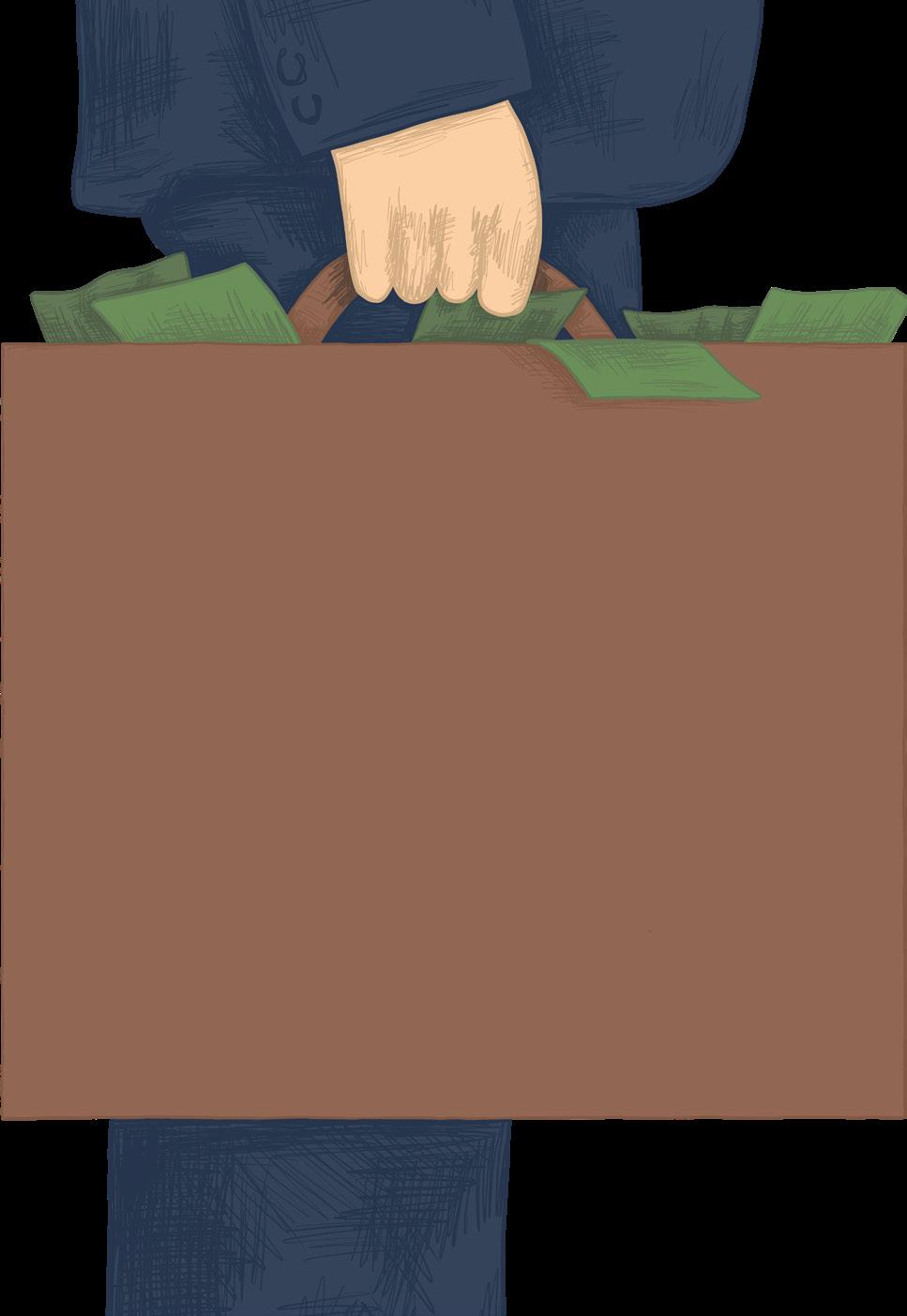
The Medium spoke with the University of Toronto Mississauga Department of Eco nomics professor, Angelo Melino, about the state of
In a press release dated October 26, 2022, the Bank of Canada (BoC), Canada’s cen tral bank, explained that inflation remains at higher than normal levels, even though it has declined slightly from its peak of 8.1 per cent in June 2022 to 6.9 per cent in Sep tember 2022. “The economy is still in excess demand—it’s overheated. Households and businesses want to buy more goods and services than the economy can produce, and this is driving prices higher,” states Tiff Macklem, the Governor of the BoC, in a press conference for the Monetary Policy Report—October 2022.
“The economy is still in excess demand—it’s overheated.”
To further curb inflation, on October 26, 2022, the BoC increased its policy interest rate—also named the target for overnight rate—from 3.25 per cent to 3.75 per cent. This growth marks the sixth successive raise since March 2022, before which the rate was 0.25 per cent. The target for overnight rate is used in the overnight market, where finan cial institutions borrow money from each other for a single day to settle payments to their customers.
Melino states that a direct impact of a higher policy interest rate is the cost of borrowing increases for loans that need to be repaid within shorter timeframes. As the target for overnight rates rise, finan cial institutions will pass on the extra cost to its borrowers. Thus, fewer households and businesses will take on debt to make purchases and investments, leading to a reduction in aggregate—the economy’s to tal—demand. This works towards fixing the economy’s misaligned supply and demand.
Considering that the BoC had first in creased the policy interest rate back in March 2022, the BoC reports that “inter est-sensitive areas of the economy” have already experienced changes. Notably, the housing market has seen reduced activity— which has a noticeable impact on reduc ing aggregate demand. “A large part of the economy is driven off the housing market. Think about real estate agent fees, lawyers’ fees, […] furnishings. […] There’s a lot of renovation that gets done when people buy homes as well,” contends Melino.
As the increased interest rate spurs con sumers to delay big purchases, Melino ex pects the market for what are known as “white goods”—large electrical appliances, such as refrigerators and stoves, that are
costly and not purchased as frequently—is likely be affected.
In conjunction with adjusting the pol icy interest rate, the BoC has also been implementing quantitative tightening (QT)—which aims to cool down the econ omy—since April 13, 2022. This process is the opposite of quantitative easing (QE)— which aims to stimulate the economy. In April 2020, the BoC implemented QE to stimulate the bond market, which was heav ily impacted by the Covid-19 pandemic. According to the BoC’s staff analytical notes published September 2022, under QE, the BoC purchased “government bonds in ex change for settlement balances,” which are “deposits that major Canadian banks hold at the [BoC].”
After QT began, the BoC held its Gov ernment of Canada bonds to maturity and “[stopped] reinvesting the proceeds of prin cipal and coupon repayments.” The BoC expects that households and businesses
may withdraw their deposits from banks to purchase new Government of Canada secu rities, filling the void that BoC left behind when it stopped reinvesting into govern ment bonds. This reduces the amount of money flowing in the economy and coun teracts “inflationary forces.”
“So, we would expect long term interest rates to go up a little more than they would otherwise, because of the quantitative tight ening,” states Melino. He goes on to explain that long term interest rates have a sizeable impact on economic activity. “Companies that invest are often more interested in lon ger term interest rates than the overnight interest rate.”
Regardless of the implemented initia tives, the BoC expects economic recovery to be a slow and steady process. Macklem explains in a press conference that “there are no easy outs to restoring price stability,” and that the economy must steadily readjust its supply and demand levels. Due to the mon etary policies implemented, the Bank of Canada expects the growth of the Canadian economy to be stunted in upcoming quar ters, after which the economy will recover amid normal and stable levels of inflation.
Prospectively, Macklem expects the poli cy interest rate to be increased further, with the magnitude dependent on the efficacy of implemented monetary policies at cooling down the overheated Canadian economy. The next interest rate announcement is slat ed to take place on December 7, 2022.
the Canadian economy and the BoC’s monetary policy.
Larry Lau News Editor
03
BLAIR GABLE
KARIMOVA/THE MEDIUM
UTM reveals 2022 Annual Research Prizes winners
Mari Khan Contributor
>> WINNERS continued from page 01
Exploring the depths of pain with Associate Professor Loren Martin
Martin’s research focuses on exploring the complexity of the pain we feel—more specifically, measuring the levels of pain felt in different environments. His lab focuses on bridging the gap between “animal models and human subjects or pa tients” in pain research.
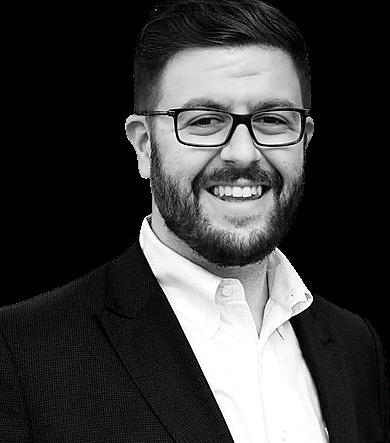
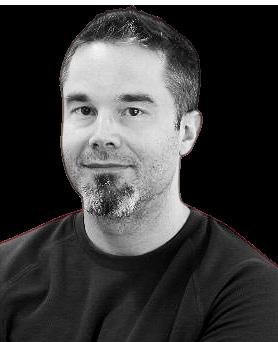
Martin explains that researchers are able to study animals quite well and are able to develop drugs for human use on a biological level through animal trials. However, beyond the trials, these drugs don’t translate well to human usage, hav ing a “failure rate of 95 per cent.” The high failure rate is due to the presence of “variables neglected during animal trials.”
During animal trials, biological determinants are at the fore front of research focus, while social and psychological deter minants—which can be key—are often overlooked.
Despite the high failure rate, there are only two labs in Canada that are exploring human pain modulation. Martin explains that this is because pain is hard to study—at a base level, we are still unsure of how the brain truly functions in relation to pain. Regardless, he is hopeful that in the future, there will be more labs that focus on studying pain.
Assistant Professor Alison Smith’s focus on governance and homelessness


Smith’s research focuses on exploring government policies and homelessness, specifically in Canada. In the description for her book, Multiple Barriers: The Multilevel Governance of Homelessness in Canada, Smith states that “Despite decades
of efforts to combat homelessness, many people continue to experience it in Canada’s major cities.”
According to Homeless Hub, a research institute in Cana da that focuses on homelessness, in 2021, more than 18,000 people were homeless in Toronto. Through her research, Smith explores ideas on how to control the rate of homeless ness and “how actors are limited in what they can do and how they work around these limitations to make significant contributions,” as is read in her bio at the university.

Conversing about the Victorian era and humanities with Associate Professor Daniel Wright
Professor Wright’s research focuses on studying novels from the Victorian era—British literature of the 19th cen tury—and analyzing it in conjunction with topics such as philosophy, sexuality, and gender. Wright states that “a lot of literature researchers in the Humanities find their way to the Victorian period,” because at its time, it was peak literature— everyone was consuming it and conversing about it. While it trickles into modern society’s conversations, literature is not as popular of a conversation topic anymore, especially with the introduction of other forms of entertainment and media. As such, Wright finds it a responsibility of a literature profes sor to “keep the novel in conversation.”
“One of the basic ideas [with] research and English litera ture is that we’re never aiming for the final answer, the final word,” says Wright, explaining that there is no finite end to studying literature. He contends that one of the most excit ing aspects of teaching the novel is being able to hear fresh perspectives from students on passages he has read multiple times. Answers, when analyzing literature, constantly evolve.
The 2022 Annual Research Prize Symposium will take place on November 29, 2022, from 12:30 p.m. to 2:30 p.m., in MN3230. Any person interested in learning more about the three prize recipients’ research and stories can register to attend the ceremony.
Research on the depths of pain, homelessness, and novels from the Victorian era wins UTM professors $2,000 for future studies and development.
04
UTM’s 2022 Annual Research Prizes
Martin Alison Smith
Wright
SAMIRA
Loren
Daniel
The CUPE protest, GO Transit strike, and the notwithstanding clause—how they are affecting worker’s rights
The Ontario government rescinds Bill 28—a back-to-work legislation that was passed using the notwithstanding clause—as part of a deal with the CUPE to end education workers’ protest.
Mariana Dominguez Rodriguez Contributor
On November 7, 2022, the Canadian Union of Public Em ployees (CUPE) protest—which arose due to the labour union’s 11.7 per cent annual pay raise request for education and administrative workers falling through—came to an official end after Ontario Premier, Doug Ford, promised to rescind Bill 28, Keeping Students in Class Act. The bill was passed on Novem ber 3, 2022, through invoking the controversial notwithstand ing clause.

Under Bill 28, any strikes concerning “employees of school boards who are represented by CUPE” will be forcefully ended. Additionally, education workers would be bound to a govern ment proposed four-year agreement, and “workers could face fines of up to $4,000 per day if they strike,” reads a CBC article. The terms of the agreement would include a 2.5 per cent annual raise for workers with an income of less than $43,000, and a 1.5 per cent raise for the rest.
“We have received and can confirm that the premier will introduce and support legislation that will repeal Bill 28 in its entirety,” said Laura Walton, president of the CUPE, in a press conference, declaring the rationale behind ending the strike. On November 14, Bill 28 was rescinded by the government as promised.
The notwithstanding clause, also known as Section 33, comes from the Canadian Charter of Rights and Freedoms, a docu
ment representing the rights of Canadians under our system of liberal democracy. The clause outlines the power given to Ca nadian parliaments to override specific sections of the Charter, “namely section 2 (fundamental freedoms), sections 7 to 14 (le gal rights) and section 15 (equality rights)” as denoted by the Government of Canada’s Charterpedia
Democratic rights—like citizen participation, equality, and the right to vote, to name a few—are immune to the effects of the notwithstanding clause. Additionally, the clause is limited to five-year terms, ceasing in effect upon that period’s conclusion unless re-enacted. However, no judicial review can be called on legislation passed with the clause. Because the clause provides the ability for parliaments to disregard citizen’s rights and free doms, it is intended to be used “only in most unusual and ex tenuating circumstances,” as stated by Wally Oppal, former At torney General of British Columbia, in an interview with CBC
Shortly after Ford’s decision to invoke the notwithstanding clause, criticism and concern around worker’s rights arose, in cluding a negative reaction from the federal government. Prime Minister Justin Trudeau believed Ford’s use of the clause was “wrong and inappropriate ”
GO Transit went through similar circumstances in a battle for fair compensation. On November 7, 2022, at 12:01 a.m., 2,200 GO Transit workers walked out in protest after the Amal gamated Transit Union (ATU) Local 1587 and Metrolinx, the operator of regional transit for Greater Toronto and Hamilton Area, failed to reach a deal during the previous weekend.
In a CBC article, the ATU explained that there had been ongoing bargaining between the union and Metrolinx. Work
STEVE RUSSELL
ers were concerned about being replaced with cheaper outside hires and wanted an increase in the number of full-time em ployment opportunities offered by Metrolinx. Additionally, the ATU claimed that the GO Transit workers have been working “without a contract since June 1,” while the negotiations began in April. However, Metrolinx issued a statement, stating that the workers had walked away from the midst of the negotia tions and had declined a request to return to work.
The strike went on for four days, during which patrons of GO Transit were left scrambling to find alternative transportation. On November 11, GO Transit resumed services after Metrolinx issued a tentative contract with the ATU, ending the worker’s strike. The ATU said that the deal was reached as the worker’s concerns about employee safety were addressed.
The CUPE and GO Transit strikes, while having happened independently, invite a potential call to action for safeguarding worker’s rights and the Canadian democracy.
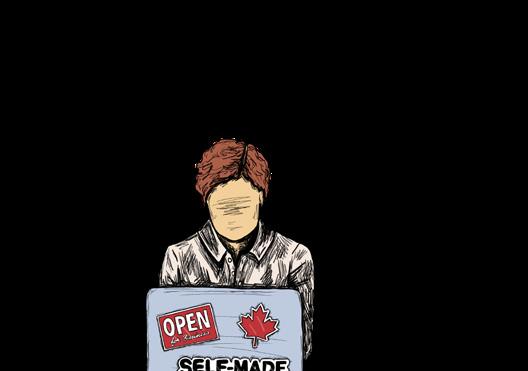
Lost your old job? Start a new one! The rise of entrepreneurship in Canada
Yusuf Larizza-Ali Contributor
As a result of the Covid-19 lockdowns and economic uncertainty, many smaller businesses were impacted and saw their productivity derailed. According to a 2021 Statistics Canada report, as the Co vid-19 pandemic began, many businesses closed down due to financial and economic constraints. Yet, the unprecedented eco nomic conditions created by the Covid-19 pandemic opened up new opportunities, spurring the creative and the courageous to embark on an entrepreneurial jour ney—starting their own businesses.
The Medium spoke to Ignacio Mon grell, the assistant director of ICUBE UTM, which assists startups. He noted an increase in applications to the program and an interest in start ing new businesses. “That trend has been growing since [Co vid-19] started,” states Mon grell. He points out one way the pandemic has benefit ted their program: as events
were held virtually, more people would at tend as they were less likely to have sched ule conflicts.
The Medium also conversed with Assis tant Professor Camille Hebert from U of T’s Rotman School of Management. Her research primarily involves “corporate fi nance, entrepreneurship, [and] labour and finance.” She brings up the topic of infla tion and states that there is a drop in the amount of equity for startup businesses— people who lost jobs during Covid-19 may have started small businesses on the side, which requires capital that could otherwise be invested. Looking at this from an other perspective, Hebert notes that the pandemic has spurred people who lost their jobs to take the leap and start their own businesses. She emphasized that a critical matter for aspiring businesses is to grasp what attracts investors, who ultimately provide the entrepreneurs with the tools necessary to succeed.
The current state of small and medium
sized enterprises (SMEs) varies across in dustries. “[How SMEs are doing] really depends on the industry and the sector they’re a part of. We see some sectors that are growing and blooming,” states Mon grell. On the other hand, he explains that certain enterprises do not receive the same opportunities as others. For example, busi nesses comprised of Indigenous Peoples, fe male, and queer individuals, face additional challenges in entrepreneurship due to un derrepresentation. ICUBE UTM strives to provide equal opportunities to groups that require it and to draw attention to these is sues in Canada.
In addition to ICUBE UTM, there are various organizations in Ontario that fos ter entrepreneurship. A media release from the Ontario Chamber of Commerce (OCC) states that small businesses have “shown tremendous strength and resilience throughout the pandemic” and “continue to grapple with supply chain constraints, labour shortages, and inflation, impacting business predictability and their bottom line.” The OCC declared its partnership with Desjardin, a large financial institution, to recognize the success of small businesses during the OCC’s “Small Business: Too Big
To Ignore” campaign, which took place from October 16 to 22, 2022.
The Ontario government also offers en trepreneurship programs that provide as piring businesses with the resources and assistance they need to thrive.
The University of Toronto Mississauga will be offering a course about starting a successful business in the coming winter semester. Professor Hebert will be teach ing MGT495: Entrepreneurial Finance and Private Equity. The course will provide students with extensive knowledge on how to overcome the challenges of start ing a business. Hebert states that the course will have a “heavy focus on finances” and the tools available to help young entrepre neurs succeed. Prerequisite courses include MGT231: Business Finance 1 and MGT232: Business Finance 2.
Mongrell regards the future for aspir ing entrepreneurs with hope. “There’s a lot of initiatives, provincially and federally, to help both small and medium startups that are struggling [with matter such as] hiring talent, going digital, or going online,” he states, explaining that there are programs and organizations that help startups grow into something more.
The Covid-19 pandemic—while directly leading to an economic downturn—has opened up new business opportunities, leading to reignited interest for entrepreneurship.
05
06 OPINION
EDITORIAL BOARD
Editor-in-Chief Elizabeth Provost editor@themedium.ca
Managing Editor Juliana Stacey managing@themedium.ca
News Larry Lau news@themedium.ca

Opinion Kareena Kailass opinion@themedium.ca
Features
Prisha (Maneka) Nuckchady features@themedium.ca
A&E Julia Skoczypiec arts@themedium.ca
Sports Alisa Samuel sports@themedium.ca
Photo Samira Karimova photos@themedium.ca
Design Manjot Pabla design@themedium.ca
Copy Aidan Thompson aidan@themedium.ca
River Knott river@themedium.ca
Social Belicia Chevolleau social@themedium.ca
Podcast Kareem Al-Sawalmeh message@themedium.ca
ASSOCIATES
Emily Rogers, News Mihail Cubata, News Dalainey Gervais, Features Olga Fedossenko, Features Melody Yang, Sports Radhia Rameez, Sports
WRITE FOR US themedium.ca/write
Calling all volunteers! Editorial
 Editor | Kareena Kailass opinion@themedium.ca
Editor | Kareena Kailass opinion@themedium.ca
TO CO NTRI BU TE & CONNECT: themedium.ca/contact
@themediumUTM @themediumUTM
@themediumUTM @themediumUTM
@themessageUTM @humansofUTM_
Summer is officially behind us. Outside, it’s gray, rainy, cold, and otherwise undesirable. The only silver lining is the momentary winter wonder lands, but they only go so far when you’re shivering at the bus stop. We’ve already been greeted by our first snowfall, and over the next few months, temperatures will continue to drop until another Ontario winter has us bundled up in toques, jackets, and mittens. For those of us with warm houses to retreat to, it will be a season spent indoors, hiding away from the cold weather. While we at The Medium appre ciate the beauty of every sea son, for those without secure shelter or financial stability, winter can be an incredibly difficult season.
For some, the luxury of a warm house and a cozy bed
is not an option. According to a review by Fred Victor, a social service charity, on any given night, more than 10,000 people are homeless in Toronto. This means that for many people, the cold weather is not just an inconvenience. It’s a threat. And in addition to housing issues, the City of Toronto reports that one in five households face food inse curity. Many students at the University of Toronto Mississauga face these issues themselves.
At The Medium, we believe in community involvement. The cold weather reminds us that there are always people in need, and many of them are amongst us. With our busy schedules, it can be easy to get self-involved and forget the difference that we can make in other people’s lives. Perhaps this winter is an op portunity to get involved in a community outreach program or to volunteer in your local area. Or maybe, it’s simply a reminder to approach every person with compassion and patience, be cause you never know how they may be struggling.
If you are looking to get involved in your community, check out Volunteer Toronto for opportunities to make a difference.
Having a stuffed animal as an
Yusuf Larizza-Ali Contributor
Stuffed animals are an integral and popular part of many of our childhoods. Just reading this, you might envision your little cuddly companions that you stuck by as a child. That time of our lives may have been wonderful, but unfortunately it came to an end when it was “no longer acceptable” for us to sleep with plushies. Once we were labelled as “weird” for having a teddy, we chucked them away and never looked back.
Oh, and before you ask, I was in fact one of those toy-chuckers. As a child, I slept with my Curious George stuffed toy because I felt safer with him in my presence. When I got older though, he became more of an annoyance than an asset. So, like many others, I put George aside for good. In general, my experience was no differ ent than anyone else’s: I kept my stuffed toy until I “outgrew” him and felt I no longer needed him.
To those of you who still cling to your stuffed teddy bear when you sleep, there’s no need to worry. One piece of advice I can give from my Curious George experience is that the time to let go will come to you naturally. Eventually, you’ll reach a point where stuffed animals in bed become more trouble than they’re worth. I mean, how can you get into a deep sleep with the risk of rolling into this inanimate object, and anyway, why would you want such an inconvenience?
Can you really criticize an adult for having a stuffed animal when you had one at one point? If I asked ten random people how old they were when they stopped sleeping with stuffed animals, they would certainly give different answers. And that’s just it—there is


no set age where you must give up stuffed toys. So how can one person call another weird, just because they’ve chosen a different age to abandon the stuffed animal phase of their life?
There’s also one factor to this phenomenon that is overlooked— many people have stuffed animals for reasons other than it being a cute cuddle-buddy. The toy may be worth a lot, like a collectible. It could also be for childhood keepsake—this is exactly why I kept my Curious George toy for all these years. It represented some thing special to me—something special about my childhood.
Having said all this there are valid arguments on both sides, and frankly, none of them are wrong. But at the same time, whether you’re for or against, it seems most of us have reached the conclu sion that it’s weird for adults to use them when they serve as a pos sible detriment to their sleep. So, what can we draw from all this?
If the toy means something special to you, owning stuffed animals is fine, regardless of your age. Never let society push you to let go before you’re truly ready. That being said, I must leave you with this warning: if you choose to sleep with a stuffed animal after a certain age, you may be considered weird.
MASTHEAD
Stuffed animals can be more than just a cuddle buddy.
adult is okay… sometimes
With the cold weather upon us many rely on volunteer programs for warmth.
The Medium
KIRSTY MACLELLAN/THE MEDIUM
An ode to the student with no style
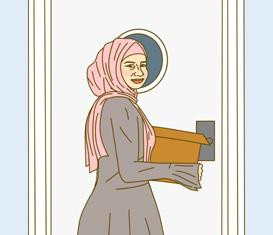

Changing Leaves:
Aïssatou
Barry Contributor
Last summer, I deleted my Pinterest. Why? Because I was jeal ous. I know that might seem bitter, and I definitely should seek professional help, but please, let me explain. From June to August, I worked 9-to-5 at a summer camp in Montreal. During my shifts, I only wore black joggers or leggings with old t-shirts, given that most activities were spent running after energized seven-yearolds. Every day, I’d come home sweaty and exhausted. After a long shower, I’d lay in bed only to “doomscroll” on Pinterest. I would drown in a sea of aesthetics—whether it was cottage core, 90s nos talgia, off-duty Bella Hadid, or clean girl aesthetic—my feed was bombarded with images of beautiful, rich, and stylish people. It not only reminded me of my own lack of style, but it also reminded me of my empty bank account.
The truth is, we live in a time where fashion is omnipresent. From YouTube clothing hauls to Instagram style influencers, fashion is an intrinsic part of the Gen Z cultural landscape. And although it is beautiful to watch my generation experiment with clothes, I can’t help but feel left out. After all, having a singular style or embodying a certain aesthetic is a luxury most undergraduate students do not have.
Plus, I feel like our generation is contradicting itself. At the be ginning, the freedom for each person to have their own style was appealing. It showed the world that Gen Z was a progressive, anar chist generation, that did not want to abide by traditional, western politics of beauty and style. In a way, I feel like Gen Z’s openness to change was primarily expressed through fashion. We care about the
But something changed recently. I noticed a materialistic streak in this new wave of “dressing as you please”—a sinister undertone that had a lot to do with social media. The rising popularity of Tik Toks where people ask strangers how much their outfit costs prove my point. They often showcase young New Yorkers who all em body unique, progressive, and disruptive looks. When I first came across this type of content, my naïve-ass thought these people were broke students like me. And then, I heard a guy says his belt cost $540 and his bag was another $800. And that’s fine—you don’t have to hide your financial stability to avoid being judged by people like me, but GEEZ…a $540 belt???
Yet, whenever I walk around the University of Toronto Missis sauga campus, I am immediately pulled out of this social media bubble. I see students dressed in skinny jeans and checkered vans (which, for whatever reason, were both shunned from the Gen Z fashion scene). I see students in regular outfits with no discernible brand name attached. I see students look like…students. And to be honest, it feels good. It makes me realize that the Gen Z fash ion scene is, first and foremost, a social media construct. It only represents a tiny part of our generation; the one per cent who can afford to dress intentionally and catch up with the cultural trends that permeate our feeds.
So, to my fellow students with no style, know that it’s okay to miss out on the glitz and glam of having a definitive aesthetic—you are focusing on something much more important than any circu lating fashion trends. Just because you wear black hoodies every day does not mean you are not a unique and innovative being. In a world designed to make you feel unremarkable, the only thing that never goes out of style is being your authentic self, even if your clothes don’t convey it (yet).
I left The Medium
Aia Jaber Columnist
Iabsolutely loved being Managing Editor of The Me dium. The journey has been filled with intense emo tions but has presented me with opportunities to ex plore the hobby I love so much. Writing is engrained in my character, memories, and my friendships. It makes me proud and—by extension—working at The Medium has made me feel the happiest to be Aia.
But the truth is, I’ve hit some lows in the past few weeks and had to shift from prioritizing others to pri oritizing my own needs. I overworked myself emotion ally, physically, and mentally. I tried to be the version of myself I always wanted to be and—for a while—I was. I was tired, but I was proud. Then, the activities I enjoyed no longer brought me pleasure. I felt lost, helpless, and above all else, empty. The future terrified me, and in all honesty, it still does.
My anxiety is trying to drag me into an abyss of help lessness and fear. Still, despite the events of the last few weeks, there is a fire brewing to come back as stronger than before, but in order to rebuild and strengthen my self, I need to prioritize my health.
So, I left the publication.
The Medium is an absolute dream. The office space, the authority, the experience of holding the magazine and newspapers in your hand. The coffee breaks, the Googling your name, and the sight of your face all over the Instagram feed. It is lovely.
On my last day of work, we hosted a launch party for our magazine, Out with the Old. Liz and I knew for a while that the end was coming, but the team only found out a few days prior. On the last day my brain was on auto-pilot—I was simply trying my best to prepare the best party ever. And the party was everything we hoped it’d be. Holding the magazine in my hand and turn ing each page illustrated by the most talented Manjot, felt bittersweet. Tears welled in my eyes, and I quickly wiped them away. I didn’t want to make my leaving any harder for Liz, Juliana, or myself.
Consider this my goodbye letter as Managing Edi tor and a welcome to Juliana, the new Managing Editor. Juliana, I know you will kill it. And to Liz, you are the best Editor-in-Chief The Medium has ever seen. Thank you for caring for me during such a difficult time. You are family.
Thank you to everyone for your continuous support. We will continue to join each other on this column journey ‘till April. See you next time.
07
It is expensive to have an aesthetic as an undergraduate student.
Odia
BEATRIZ SIMAS/THE MEDIUM
We need to recognize and invest in women’s mental health now
Malavika Puri Staff Writer
According to the Anxiety & Depression Association of America, women are twice as likely to be diagnosed with generalized anxiety disorder, panic disorder, and spe cific phobias, when compared to men. The organization also states that women are three times more likely to be affected by obsessive compulsive disorder, and five times more likely to be affected by post-traumatic stress disorder. Although these differences in gendered symptoms of mental health have been investigated, researchers often fail to consider specific symptoms unique to women and femme-identify ing individuals.
Issues related to menstruation, like premenstrual syn drome (PMS) and premenstrual exacerbation (PME), are severely under-investigated because their legitimacy re mains in question. PME, a trait of PMS, is a phenomenon in which menstruation heightens pre-existing health is sues, such as schizophrenia, and eating disorders. Dr. Ad woa Danso-Boamah, a general practitioner at the National Health Service, emphasizes this observation by saying, “[PME] is not the same as having pre-menstrual syndrome, as [those with PME] have symptoms throughout their cy cle, but, characteristically, have worsening symptoms of an existing medical condition such as anxiety, depression, or migraine.” However, this does not mean women’s mental health issues are only related to menstruation.
“Autism masking involves spotting those symptoms yourself and working desperately to hide them. It’s common in people who don’t have an autism diagnosis, and sometimes, masking keeps people from getting the help they need.”
Apart from PME, many other mental health issues mani fest differently between sexes. For example, women on the autism spectrum exhibit different symptoms than men on the autism spectrum. The habit of masking is more com mon in autistic women than in men. According to a post by Elemy, a platform for childhood behavioural and mental healthcare, “Autism masking involves spotting those symp toms yourself and working desperately to hide them. It’s common in people who don’t have an autism diag nosis, and sometimes, masking keeps people from getting the help they need.” The under-diagnosis and misrecognition of autism in women plays a significant role in the need for women with au tism to mask. Previous research on autism has been conducted predominantly on male subjects. As such, symptoms and diagnoses used to define au tism have become characteristic to males. Masking in women can often be observed when: women stay close to their peers, mimic others’ social behaviours, including facial expressions, and suppress behaviours that tend to be frowned upon.
Another example of women masking their mental health-related symptoms is with attention deficit hyperac tivity disorder (ADHD). Women learn to hide their natural behaviours more efficiently than men. In young girls, when ADHD is usually diagnosed, there is an exhibited tendency to internal
ize the disorder, often causing the development of anxiety, which is not as great of a disturbance in class, resulting in teachers and parents being unaware of the symptoms in girls. This lack of diagnoses is carried into adulthood where women internalize their symptoms leading them to fall into depression, cause distress, or, find it difficult to manage their emotions.

“This lack of diagnoses is carried into adulthood where women internalize their symptoms leading them to fall into depression, cause distress, or, find it difficult to manage their emotions.”
Gender-based discrimination isn’t only a factor in the diagnoses of neurodivergent disorders; it is also the culprit of many women’s issues. Sexist remarks and harassment, like catcalling and workplace discrimination are
forms of sexism that women experience daily. According to an article in the British Journal of Psychiatry, the more women experience gender discrimination, the more likely they are to have symptoms related to depression, anxiety, and post-traumatic stress disorder. Another indirect impact of sexism is the underrepresentation of women in medical research. A study published in the journal Biology of Sex Differences states, “Women experience adverse drug reac tions […] nearly twice as often as men,” largely because clinical drug trials are conducted with disproportionate fo cus on male participants.
There is still a threatening discrepancy in mental health research on women. The issues faced by women and femmeidentifying individuals deserve the attention of scientists just as much as anything else. Women should not be forced to live with their issues, while being expected to carry on with their responsibilities. While science lags in female mental health research, women in the real world continue to feel their pain every day. When will it end?
Women’s mental health is a widely unknown, under-researched and under-funded area of study, even though women are prone to more mental health issues than men.
08 BEATRIZ SIMAS/THE MEDIUM
Racism is a crime against the innocent
“Fuck you China man. I’ll kill you.”
Alan Tran Contributor
Idance down the tunnel of Toronto’s MetroCentre to “One Last Time” by Ariana Grande. The cold forces many peo ple down here during winter. The hallway leads people from the mall to St. Andrew Station. I’m heading home from work. My job at Rogers Centre ends around mid night on Fridays; the shift sucks.
I lick my cracked lips, frozen from the frigid winter air.
“One last time,” I sing to myself.
My voice echoes down the tun nel. It’s rare to bump into people. I smack the metal button to open the door and wait. The heavy door creaks open. I step onto the final stretch to St. Andrew Station.
A man stands at the bottom of the stairs. He has long hair, a dirty beard, a hunched back, and rough rags as clothes. He holds a long wooden stick, taller than him and sharpened at the top.
I power walk. I lower the volume three levels. Don’t stare at him Don’t make eye contact Don’t breathe too loudly Just get past him. I jog down the stairs and speed past him but notice his hand move in my peripheral.

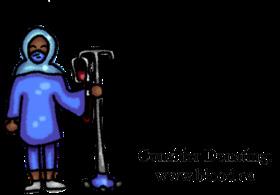

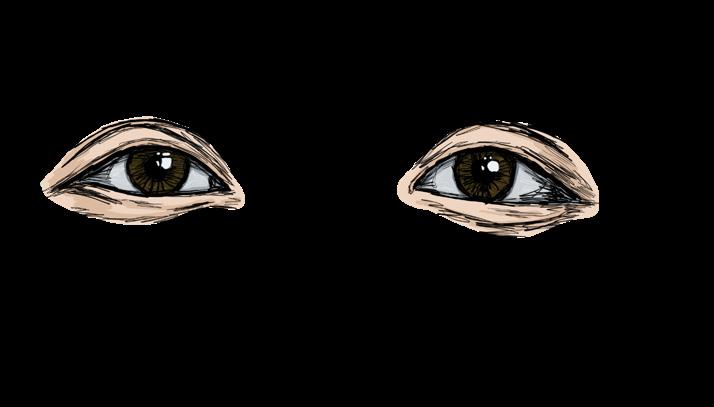
I take out an earbud and ask, “Did you say something?”
“Get out of here you Chinese. Get out of our country!” He yells and raises his spear.
I pop my earbud on and jog down the hall. I look back. He points the stick at me.
I turn the corner into St. Andrew Station.
I want to give him the finger.
I want to say, “I’m Vietnamese.”
I want to go home.
This experience frightened me. I was born and raised in Canada by my immigrant parents. Throughout school, I never experienced racism. The worst I had were light but friendly jokes about squinted eyes and dogs for dinner. I, of course, joined in. But now that I think back to those incidents, while those comments may have felt harmless, they were fueled by racism—I just didn’t know it.
That walk to St. Andrew Station reinforced that racism exists but also showed me that crime can be influenced and conducted by these repulsive beliefs. The thoughts that spun through my mind when I encountered the homeless man, clutching a two-metre-long spear in his subway-hall home, were “please don’t be crazy.” I genuinely believed that if we were to converse, it would be nothing more than preach ing about religion or begging for coins. I received hate and anger for just tiptoeing by. What did I do? I just wanted to go home and sleep.
That encounter happened in 2018, more than four years ago. Racially motivated crimes have occurred since, like the anti-Asian movement that occurred in America for exam ple. In the past few years, there have been attacks around
North America specifically targeting Asian ethnicities. Even in Canada, anti-Asian hate crimes are no stranger. From Vancouver to Toronto to the thousands of cities in between, anti-Asian crimes are episodic.

According to CTV News, in Canada alone, Asian hate crimes rose by 300 per cent in 2020. I didn’t know this sta tistic existed. I thought that Asian hate became more preva lent in 2021 when I learned of movements to stop Asian hate. Twitter’s trending page advertised the movement, and games I played, like Apex Legends, provided free cosmetics to support Asian communities. News articles about Asian targeted at tacks flooded my phone. Rac ism hides in society until we become aware of and exposed to it.
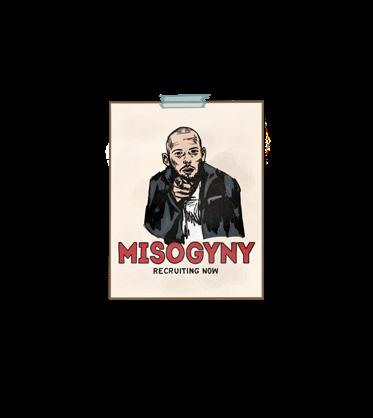
I think the increase in targeted crime stems from misunderstandings. Human fear is gripped by the unknown, and misinformation only chains us to misguided beliefs. It doesn’t help that the same people making these racist remarks will lack exposure to di versity or specific ethnicities. People trapped in a bubble of these beliefs will gradually believe them to be true. Without an open mind, hate may just grow until it reaches a point of crime. It may be naïve to always believe in the good in peo ple—to think that their racist remarks are mostly a product of solitude. But maybe, interacting with diverse groups can direct us away from racism by breaking down these barriers they face. It’s unfortunate that people are clouded by hate. But hopefully, people can stop squinting their eyes and view each other as equals.
Alpha-male influencers are the poster boys of modern-day misogyny
Angelina Jaya Siew Staff Writer
>> MISOGYNY continued from page 01
Beyond just openly declaring that victims of sexual assault must “bear responsibility for their attacks,” Tate spreads extremely danger ous ideals about the treatment of women. To him, women are objects that must be chased and controlled. As if that isn’t bad enough, his sickening homophobic remarks and antifeminist ramblings have gained much traction on social media.
Unfortunately, his ban from posting on social media plat forms has done little to stop the circulation of his controversial messages, as many accounts continue to post clips of him spew ing hateful words about women to achieve maximum views. I also see Tate appearing on numerous podcasts, which allow his misogynistic views to have a wider reach. How can we allow such reprehensible behaviour to be to be given a platform that could shape the attitudes of young social media users?
I also think that alpha-male influencers are fostering inse curity in men who may feel that they sorely lack the qualities of these social media per sonalities. To make up for it, they try their best to emulate these toxic traits.
Of course, a copious number of other alpha-male influencers exist, such as the duo FreshandFit, who have amassed more than one million YouTube subscribers, de spite being banned from TikTok. This in fluencer pair flagrantly display their sexist views through their podcast, even having a day called “Womanizer Wednesday” on their channel. They also denounce values such as fi delity, declaring that, “monogamy goes against a man’s natural state, sexual fidelity is a wom an’s natural state.” How vile!
By: Reid Fournier
Clearly, posts from influencers such as Tate have danger ous implications on young male social media users. Not only do I think that these posts encourage boys to objectify young women, but they also condone violence against women. I be lieve that young male social media users in particular may find Tate’s arrogance alluring and mirror his beliefs and actions in order to fit in and be viewed as “cool” or “more masculine.”
What can we do to control the dissemination of this nega tive portrayal of men? To me, it is imperative that social media platforms such as Instagram and TikTok make a more concert ed effort to reduce or ban altogether the circulation of posts from men who push their misogynistic ideals. Podcasts need to stop inviting influencers like Tate as guests on their shows. Thankfully, some progress has been made as a spokesperson of TikTok has recently revealed that the app will be removing all controversial clips of Andrew Tate circulating on its platform.
It is clear to me that the sexist views of alpha-male influenc ers, as well as those who follow them, are an obvious red flag. If you happen to encounter these types of sexist influencers on your TikTok or YouTube feeds, spare your brain cells and keep scrolling for healthier content.
By fostering a culture of toxic masculinity on social media, alpha-male influencers negatively impact users.
I am a victim of racism.
09
How the UTMSU is addressing the limited mental health services on campus
Dalainey Gervais Associate Features Editor

Being a student is hard. For that reason, there is no better person to help guide you through university life than other students. Beginning in 2020, the University of Toron to Mississauga Students’ Union (UTMSU) launched its first mental health peer-to-peer counselling service. Put in place to resolve the lack of resources promoting well-being that students felt on campus, the Peer Support Program aims to provide support tailored to students’ individual needs. “The idea came from students expressing the need for mental health resources on campus and the need for those resourc es to be from peers rather than mental health professionals that students felt were out of touch,” explains Maëlis Barre, the current president of the UTMSU. “Students felt like the [Health and Counselling Centre] wasn’t always comprehen sive in the supports that they were offering,” she adds.
In her fourth year at UTM, completing a double major in Astronomy and Physics with a minor in Mathematics, Barre understands the hardships of student life. This is es pecially true as she is an international student from France. “I was looking into universities that offered bachelor’s degrees in astronomy or astrophysics and to studying abroad to experience a different culture,” says Barre.
“UTM gave me the opportunity to study what I was actually passionate about.”
Looking to get involved on campus and build a community in Canada, she began getting involved with the UTMSU, initially volunteering at their free, weekly break fast bars. She worked
her way through the UTMSU as the volunteer coordinator in her second year, the vice-president external in her third, and finally, she was elected as president in her fourth year.
Over the course of the pandemic, the program was run exclusively online. Now, with increased demand from the student body, the UTMSU has created a dedicated space in the student centre and plans to expand to address all stu dents’ needs. However, if desired, students may still choose to attend sessions virtually. Currently, the booking times are on Mondays from 11 a.m. to 3 p.m. and Thursdays from 1 p.m. to 5 p.m. “We are always open to expanding these hours according to the demand for the program,” says Barre.
“The idea came from students expressing the need for mental health resources on campus and the need for those resources to be from peers rather than mental health professionals that students felt were out of touch.”
The UTMSU presents a unique spin on peer-to-peer sup port by tailoring to the needs of the student through a quick questionnaire completed when requesting an appointment. Then, a staff member directly in charge of the program will help pair the student in need with a student volunteer that has similar lived experiences. While providing support to the student, the program builds comfort by actively show ing students that they are not alone.
To become a member of the peer support team, students must complete a series of lessons. These include general mental health training aimed at supporting young adults, a student survivor training to better assist student survivors of violence, as well as general anti-oppression and eq uity training to ensure that team members provide services in an informed and equitable manner. “We require students to take these trainings
because we want to ensure that we are creating the safe place for students that we are promising,” explains Barre.
All volunteers and staff working on the project must ad ditionally sign a confidentiality agreement before officially becoming part of the team. The volunteers use UTMSU emails to ensure that all communication with students in the Peer Support Program stays internal. These are all nec essary steps taken by the UTMSU to guarantee confiden tiality within the program and to keep students’ personal information safe.
Following each session, students can complete a feedback form. “We want to see if there is anything we can change to make students feel more comfortable within the program,” explains Barre. Students are also able to book a follow-up appointment if they would like, in which they can request to speak to the same peer.
“The first step to getting help is to reach out to the avail able resources and figure out which one fits your experience the most,” says Barre. She concludes, “I would recommend all students to check out the program because chances are the struggles they are facing as students, other people are facing those same things and they can get help.”
The UTMSU has worked hard to make the program as accessible to students as possible. To request an ap pointment, fill out the peer support questionnaire linked on their social media accounts or at www.linktr.ee/myutmsu Alternatively, visit the Info Booth in the Student Centre, where someone can help you access the form.
The peer support program is accessible to students in need of non-emergency aid. If you are in immediate danger to yourself or others, please contact emer gency services like the Peel Crisis Ser vices & Coast at 905-278-9036.
10 features
features@themedium.ca
Editor | Prisha (Maneka) Nuckchady
UTMSU President Maëlis Barre on how the Peer Support Program effectively provides peer-topeer mental health support for students, bridging the gap in services on campus.
Here to make change: Toufah Jallow inspires social sustainability through sexual violence advocacy
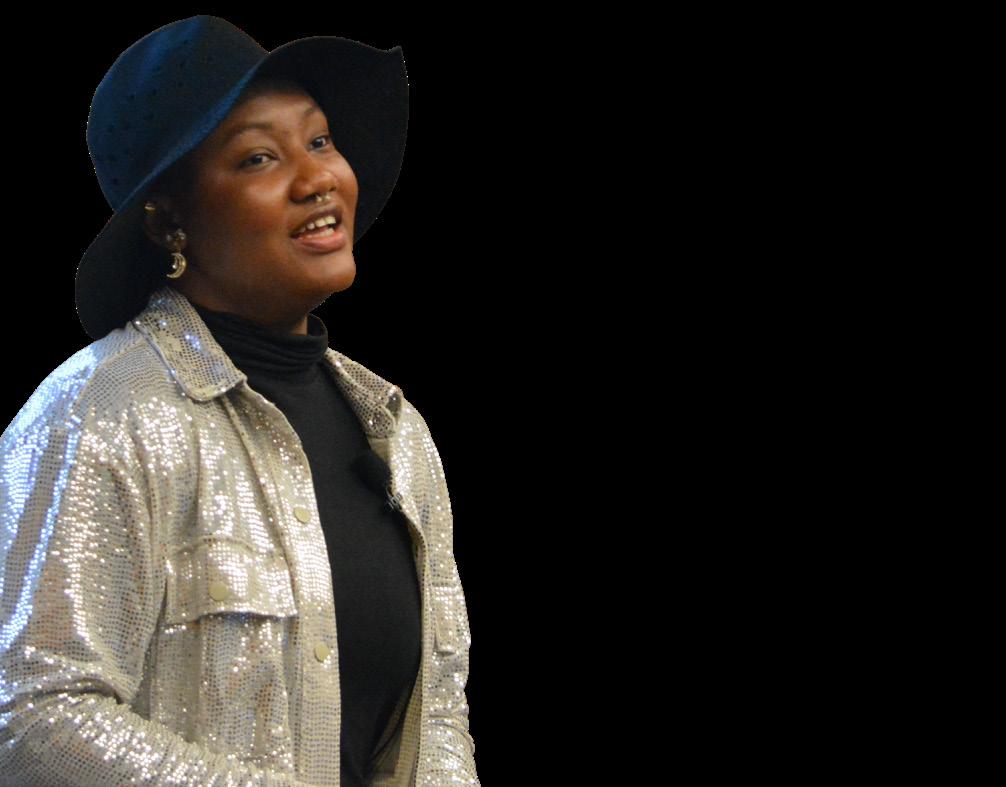 Alisa Samuel Sports & Health Editor
Alisa Samuel Sports & Health Editor
The Gambia is the smallest country in West Africa. In 1965, it gained indepen dence from British rule and found a presi dent in Dawda Jawara. Jawara’s democrati cally elected government lasted for nearly three decades before a young junior officer of the Gambia National Army named Yahya Jammeh led a coup to overthrow it. Begin ning with a promise to reverse political cor ruption in 1994, Jammeh would eventually rule The Gambia as a military dictator for the next twenty-three years.
To commemorate the day that saw Jam meh come into power, the country’s Ministry of Basic and Secondary Education initiated,
during the mid-2000s, the Miss July 22 com petition, an annual scholarship beauty pag eant for female Gambian students of junior high to college age.
In 2014, a nineteen-year-old woman who escaped the mundanity of her home life with dreams of studying the performing arts abroad won the title of Miss July 22 Queen. Her name is Toufah Jallow.
Jallow met Jammeh alongside other pag eant participants when she attended an awards ceremony at the state house shortly after her win. Naïve to the political and social reality of The Gambia, Jammeh impressed Jallow as a fatherly figure, a man who sought to empower women by helping them develop their skills. One year later, Jammeh drugged and raped Jallow in the wake of her refusal to marry him. He had incessantly pursued her with a misuse of power.
At twenty-six years of age, Jallow lives in Toronto and is an aspiring counsellor for as saulted women and children. In 2019, she returned to The Gambia to testify against Jammeh in a public hearing. Earlier this year, Random House Canada published her mem oir Toufah: The Woman Who Inspired An Af rican #MeToo Movement. In the book, as she does in life, Jallow takes a stand against rape culture to voice the experiences of women who would otherwise remain unheard.
On November 10, 2022, Jallow deliv ered a lecture on women’s ability to create a more equitable global future as the keynote speaker for the Sustainability Leaders’ Series (SLS). SLS is an annual lecture series on top ics related to environmental, economic, and social aspects of sustainability hosted by the Master of Science in Sustainability Manage ment (MScSM) program at the Institute for Management & Innovation, University of Toronto Mississauga (UTM).
MScSM welcomed Jallow to its first inperson SLS event in three years. During Cov id-19 pandemic restrictions, SLS events were held virtually.
“Most of the time leaders get strength not from their inner self but because of the position they hold. […]
Toufah is a leader who is driven by her inner strength.”
Professor Amrita Daniere, vice-principal academic and dean at UTM, opened the ses sion with her welcome remarks. Founder and the current director of the MScSM pro gram, Professor Shashi Kant introduced Jal low: “Most of the time leaders get strength not from their inner self but because of the position they hold. […] Toufah is a leader who is driven by her inner strength,” he said. “She had that inner strength, that, ‘I’m go ing to run from my country, doesn’t matter where I will end up,’ and she did that, and she did it without telling her parents.”
Jallow fled to Senegal from The Gam bia on the possibility that Jammeh’s agents would kill her for hurting his dictatorial pride—the result of resisting forced marriage to him. Marriage in African culture is largely a gender-role activity prescribed to women. In the Muslim context, men may take up to four wives. The Gambia is a Muslim-majority country.
The question arises: where did Jallow, raised in an environment with little growth and economic opportunity for women, find the mentality and courage to say “no” to her home country’s most powerful man?
“My grandmother choosing to […] insist that her daughter goes to school in a culture
that tells her her daughter’s education is not important while she watches all her neigh bours send their girls to get married to the richest man […] in the community—that is peak resistance,” Jallow shared in her speech.
Jallow’s mother, being born out of that quiet form of feminist resistance, crafted her way around the limiting polygamous setup to go to school, have a secret abortion, and raise Jallow with eyes to recognize the power dynamics between men and women.
Individual stories like that of Jallow’s mother, and of Jallow herself are as she ex plains, “where the bigger conversation about sustaining global progress comes in.”
“Jallow has realized that feminist revolutions are catalysts feminist revolutions are catalysts ‘for moving forward, whether it’s for democratization, whether it’s for justice, whether it’s for freedom.’”
From listening to the stories of sexual vio lence survivors in the International Criminal Court in The Hague, to working with Gam bian women through The Toufah Founda tion, and emerging forward-thinking female movements, Jallow has realized that feminist revolutions are catalysts “for moving forward, whether it’s for democratization, whether it’s for justice, whether it’s for freedom.”
Using the Iranian example of Mahsa Ami ni, a single story opened for society is enough to incite widespread action for social justice. Jallow therefore helps women embrace their stories, talks about bodily autonomy with them, and discusses ways they can contrib ute to their communities and ultimately have a voice on a bigger scale.
“As you think about sustaining the #MeToo movement, think about […] what ever it is that we are aspiring for would re quire our ability to step out of our shoes to hear my story, to listen to girls like that, who might not be able to speak as eloquently,” Jal low says.
Hearing from Jallow through SLS was a powerful experience for MScSM student Hannah MacRae. “What I find most inspir ing about her is that after experiencing one of the most traumatic events imaginable, she continues to challenge herself and con tinues to help others,” she says. “Toufah re minded me that I have an important message to spread, and a moral obligation to do so. Witnessing her set an example by telling her story has given me more courage to speak up for my own values in every area of my life.”
RYAN CERRUDO
The feminist and human rights activist lived as a protected person in Canada after saying “no” to The Gambia’s most powerful man.
11
Arts
Editor | Julia Skoczypiec arts@themedium.ca
Here’s what one artist has to say about creating comics and struggling to perfect artistic skills.
Hannah Grace Wang Contributor
Ifirst came across Jon Kenzo Okeya’s In stagram (@kenzo_illustrations) when his wife Audrey (@audreyokeya) reposted a story that tagged Jon. I had an assignment in CCT336: Comics and Digital Culture that required an in-depth interview with a comic artist, so I decided to reach out to Jon.
From glimpses of their life on social media, Jon and Au drey are artistically talented, creative, and enjoy travelling. When I emailed Jon and asked him to do an interview with me, he kindly agreed.
Jon said he was inspired by Audrey to draw comics. To describe his style, Jon used words like “whimsical, whole some, and silly.”
“I’d say if I had to get close to a style I aspire to [replicate], it would be a cross between Bryan O’Malley [creator of the Scott Pilgrim series], Carles Dalmau, and Audrey Okeya my wife whom I admire and adore,” Jon said. He admitted that browsing on Pinterest and Instagram for images he loves—like “old Japanese buildings” and “cool character de signs”—inspires him to draw until he feels “loosened up.”
The time it takes to create a comic depends “on the scope of the project,” Jon explained. “If I want to colour some thing fully, it will take me a week to get a spread out. If I’m only doing line art, I can finish two to three spreads a week,” he said.
Drawing inspiration “from mostly Japanese culture and heartfelt stories,” Jon designs his art through his “love [for]
Japanese folklore and culture.” His favourite part about creating comics is when he sits down to start a drawing.
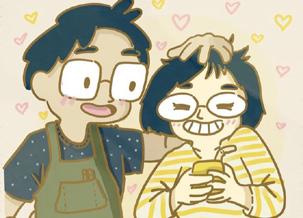
“I love drafting ideas and hammering out scripts. I can get lost in the ideation process for a whole day.” He explained that his least favourite part of the job is when he “hits the wall of skill”—something that’s been an obstacle for him since the beginning of his career.

“It’s been the thing plaguing me my whole career and it still messes me up to this day!” he said. “I had so many ideas that fell to the wayside just because I couldn’t draw something. I’d get so frustrated with myself and how much I was burn ing out that I would give up. Luckily, I’m learning how to slowly get past that [skill related] obstacle!”
On the topic of drawing traditionally (on paper) or digi tally, Jon did not seem to have a preference. “I start with traditional and render in Procreate [a design software]. In my opinion, traditional is great for ideas whereas [using an] iPad is great for executing those ideas.”
Jon also spoke about his journey to become a comic art ist and how it was not an easy road to follow. “I’d tell my younger self that it’s okay to feel defeated and sad. It’s actu ally something you are supposed to feel during the process.” He compared the creation of comics to “a video game.”
“You must spend your time levelling up by beating more challenges and fighting more monsters,” Jon said. “After you figure yourself out, the art comes out so easily. But if you haven’t figured out how to beat those challenges, you’ll never get further in the game.”
For new creatives in the comic art industry, Jon proposed that “an artist is to develop [their] mind and soul,” and that “believing in yourself” is key. Through his struggles with
anxiety associated with his “level of skill,” Jon thought that he would never find success through his art. “I really up graded myself when I learned that I had to take it easy on myself and enjoy the process of drawing. Once I had found the fun in drawing, I started seeing myself develop 100 times faster,” he said.
Jon encouraged all artists to focus on the process of cre ating—rather than centring on “fame, status, and recogni tion.” He continued, saying: “The process of making good art and figuring out how to do it better every single time you pick up a pen or a pencil is key. Just keep working on how you’re drawing and writing, and you will get to where you need to be.”
Jon encouraged all creatives that are struggling with their artistic journeys to reach out to him on Instagram. Outside of his art, Jon aims to provide support for all artists who are still searching for their passions and strengths.
How Bollywood and Hollywood use mythological universes and loving superheroes

similar between the two mythical universes.
Malavika Puri Contributor
This

Bollywood director Ayan Mukherji has come out with an Astraverse—a unique supernatural universe—based on Hindu mythology. Brahmastra Part One: Shiva is the first movie of Mukherji’s trilogy—an action-packed adventure that introduces us to the universe of Brahamastra. In his world of different “Astras” (superheroes/powers), Mukherji tells a thrilling romance story with Ranbir Kapoor as Shiva, the fire Astra, and Isha (Alia Bhatt) as his love interest.

I was so excited to watch this film. I had not seen a Bollywood movie in the theatres in a long time. As the lights went out and the mu sic started, I sank into the familiar feeling of Bollywood. While watching, I could not help
but compare the Astraverse to the Marvel Cinematic Universe (MCU). The visual effects (VFX), the fight against evil, and the charac ter’s superpowers were some elements that felt
Shiva, an aspiring DJ, grows up in an or phanage. His parents, who were part of the Brahmansh family and had superpowers themselves, died in a fight—although Shiva is not familiar with how exactly they passed. Many superheroes in the MCU—namely Iron Man, Captain America, and Spiderman—be gin their story arcs by losing a parent or par ent-like figures.
As Shiva’s story unfolds, he meets the Guru (Amitabh Bachchan), who is the head of the Brahmansh family and acts like a parental fig ure. He helps Shiva learn about and control his newfound superpowers. Guru’s charac ter is very similar to Nick Fury in the MCU. Fury, the director of S.H.I.E.L.D, organizes the Avengers Initiative to unite the most powerful beings in their universe.
After meeting Isha, Shiva discovers his fire powers. He gains motivation to use and con trol his fire Astra through his love for Isha. Love has been a significant force in many su perhero movies. Moreover, saving “the woman
in distress” is a common hook in supernatural films. Iron Man, Spiderman, and Thor have all been seen as saviors to their love interests— Pepper Potts, Michelle Jones (MJ), and Jane Foster, respectively.
Brahmastra Part One: Shiva shines brighter than other Bollywood films in the VFX arena. The Astral fight scenes left audiences in awe, and the portrayal of the elemental Astras— who united to save the world—mirrored Hin duism’s concept that multiple Gods work to gether to run the world. Interestingly, the VFX team for this film also worked on Avengers: Endgame—a staple in the MCU.
After watching this movie, I walked out of the theatre mesmerized by the world of the Astraverse. Brahmastra Part One: Shiva made me fall more in love with Bollywood. While the director drew inspiration from the MCU to create the Astraverse Trilogy, Hinduism and Indian culture play significant roles. The film is the perfect combination of the MCU’s visual effects experience and Bollywood’s typi cal romantic musical love story.
12
Spoiler warning:
article mentions scenes from Brahmastra Part One: Shiva.
Exploring the parallels and contrasts between Bollywood’s Brahmastra series and the Marvel Cinematic Universe.
Drawing with passion: An interview with comic artist Jon Kenzo Okeya
JON KENZO OKEYA
LOADING STUDIOS & MARVEL
The M ’s Playlist – A Nameless November with Larry
 Larry Lau News Editor
Larry Lau News Editor
Music
is an important part of my life—always has been, and always will be. While writing is an amazing medium of expression, I find some things are easier to communicate through the power of interwoven notes.
Glancing at this playlist, you’ll probably notice a few things. There’s music containing three different languages, namely English, Chinese, and Japa nese—the last of which I’m still learning. Multiculturalism, reflected by this multilingualism, is a central theme of my fragmented life experiences. While it is phenomenal to understand the cultures of people across the globe, I feel a bit confused as to where home is located when in the company of so many distinct cultures. Home feels like a nameless place to me, seemingly every where yet nowhere at once.
After listening to this playlist, you’ll probably notice that most songs are mel ancholic and—if the English lyrics give it away—related to heartbreak or love. As a person who spent most of his life in some form of solitude or isolation, I never really understood the feeling of love. To me, love is something that is nameless.
Now, although I have failed to learn anything useful about romantic or familial love through music, I have learned a tad bit about self-love. What I invite everyone to do is to perhaps save a little bit of the love and compassion you give to other people for yourself. You are your most energetic cheerleader, your most reliable friend, and you are your nameless, unconditional source of resolve.
Shannon Terrell on The Guest House and the craft of writing
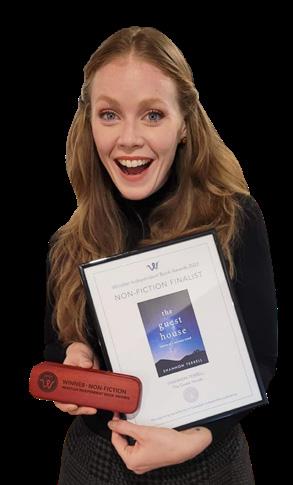 Julia Skoczypiec Arts and Entertainment Editor
Julia Skoczypiec Arts and Entertainment Editor
Creative writing is a vulnerable process. From short stories to full novels, the process of putting words to paper (or into a Word document) is often time consuming and feeds into our most precious insecurities. Before releasing their work to read ers, writers receive feedback from trusted editors and spend countless hours re-writing. Their fingers cramp and they laugh and cry and want to chuck their keyboards across the room in a fury—but it’s all worth it. Writing is an art of pristine rewards.
Shannon Terrell, a University of Toronto Mississauga (UTM) alumna and the author of The Guest House, spoke with The Medium about the non-linear writing journey that led her to complete her novel. During her time at UTM, Terrell double majored in English Literature and Professional Writing and Communications (PWC). In her final year of undergrad, she stumbled upon WRI420: Making a Book, taught by associate professor Guy Allen. The course helped Terrell combine a mul titude of creative non-fiction short stories into The Guest House.
“The process of writing what is now The Guest House took place over the course of my entire undergraduate degree,” said Terrell. “I was going to school part-time, so I was curating these stories over about five [to] six years.”
After noticing “sizeable gaps” in her collection of stories, Ter rell also took two independent studies in her final year. These courses, available through the PWC program, allow students to construct “a research/writing project” with a professor’s guid ance. Terrell’s studies allowed her to further piece together what her manuscript was missing.
“I remember at one point during the [book making] process, I printed out each individual story and I had them all in my of fice. I am a visual person, so I had to physically see the stories and understand where they might fit in the broader scope of a manuscript,” Terrell explained.
Aside from re-writes and rearrangements, Terrell spent a considerable amount of time reading as she wrote her novel. “I am a big advocate for reading what you want to write,” she said.
As The Guest House is a collection of personal life moments based on her struggles with anxiety—described on the book’s cover as “stories of a nervous mind”—Terrell read lots of mem oirs that pertained to mindfulness. The words of other authors helped Terrell when writing about her own experiences.
“One book that I always suggest because it had a very profound impact on me is called Amen, Amen, Amen: A Memoir of a Girl Who Couldn’t Stop Praying by Abby Sher,” said Terrell. “I got so much out of her book, and I would highly recommend it to anybody that’s interested in explor ing creative non-fiction through the lens of mental health.”
Recently, Terrell got to travel to Whistler, British Columbia, to partic ipate in the Whistler Writer’s Festival. The Guest House won the “Whistler Independent Book Award” in the category of non-fiction. Terrell was then invited to attend a book reading to promote her novel. She described the entire process as “surreal.”
“The book has only been out [in] the world for a few years, but it still feels very strange when people approach me and say that they’ve read it or even that they are interested in reading it,” said Terrell.
In relation to her writing style and her own feelings towards the novel,
Terrell expressed that as more time passes, her writing contin ues to change. “Any form of art is constantly going to be meld ing and changing as you grow as a person, but also as the people around you change. When we create art, we don’t want to see it stagnant, we want it to keep growing,” she shared.
For new and aspiring writers, Terrell provided two simple pieces of advice: “make a habit of writing” and “submit your stuff.” She mentioned that earlier in her undergraduate studies, she received advice that “writers should only be writing when they feel their most passionate.” Taking this to heart, Terrell found that she was not writing at all.
“The more I thought about ‘where is that spark’ and ‘where is that inspiration’ the more it seemed to elude me,” Terrell said. “I realized I just needed to make a habit of writing—even when I didn’t feel particularity inspired. And that habit of writing is what can lead to some times the most profound break throughs.”
On the topic of submitting work, Terrell ad vised new writers to pay attention to strict deadlines and submission windows for liter ary journals or book awards—both on and off campus. “You’ll be really pleasantly sur prised by the opportunities that pop up,” Terrell concluded.
Currently, Terrell works as a writer and spokesperson for NerdWallet—a personal finance website. She recently published a short story in Issue 1 of Archetype—a lit erary journal created by UTM alumnus and previous Editor-in-Chief of The Me dium, Ali Taha. Terrell is also working on a new fictional piece.
To purchase The Guest House and keep up with Terrell’s work, check out her website at shannonterrell.com. The book is also avail able on Amazon.
As a professional writer and UTM alumna, Terrell uses writing to evaluate her own growth and share impactful stories.
13
SHANNON TERRELL
Julia Savaglio—U of T’s very own pop artist
In an interview with The Medium, Julia discusses her new six-song EP, her inspirations, and her goals for the future.
Kuicmar Phot Contributor
Julia Savaglio is a first-year University of Toronto student studying management. Despite being academically in clined, music has always been an integral part of Savaglio’s life. Her new EP, titled Miss Julia Savaglio, is a six-song embodi ment of her high school experience, written in the confines of pandemic isolation. In an interview with The Medium, Julia fills us in on her music journey.
The Medium: Give us an introduction to your EP and what it means to you.
Julia Savaglio: The EP was something that I created as a re flection of my high school experience. I wrote it from grades 10 to 12. Each song reflects a different relationship or a different instance in my life where I was really having trouble. I think it’s something everybody could relate to [because] in high school you don’t really know where you stand.
TM: Define yourself as an artist. What makes you unique?
JS: I really want to be considered a writer. My writing [is focused on] others. In regard to my sound, I think it’s versatile. With my next album that I’m currently writing, it’s not just in this pop sound that I did with this EP—it’s flowing into more of a baroque pop with an Amy Winehouse influence. I would like to be considered versatile with sounds, and as a writer, I want to be considered thought-provoking.
TM: Who are your musical inspirations?
JS: Taylor Swift. I love her folklore album—it changed my outlook on storytelling and songwriting. My second inspira tion would be Amy Winehouse. That’s more of the music genre that I’m hoping to go into. The feeling and the emotion that you hear from [her voice] is everything I’ve wanted to encapsulate in my music.
TM: What was the creative process for making this EP like and what was your favourite part of it?
JS: I started writing for a competition at my music school, Merriam Music. I didn’t win the competition, but I wanted to keep going. Then Covid-19 [hit], and I just kept on writ ing about different things that happened in that last year, be cause that last year was difficult for me. That’s when I wrote “Relapse” and “September 7th”. I wrote 30 songs over a span of a couple of years, but I only chose six [for the EP]. In grade 11, I wrote “Save Myself” and “Change My Mind,” [and] in grade 12 I wrote “We Were Never Lovers”, and “Forbidden Love”—my two first singles. I started working with [producer] Isaiah Gib bons. He is one of the most creative people I know [and] was really interested in my music. He ended up getting other peo ple like bass guitarists, Andrew Murray and Milan Kozovski, and other guitarists named Joz Efteeuwsen and Adrian X [for
the recordings]. Isaiah was a great resource, and he was able to pull all of these different people and ideas into the EP.
TM: “September 7th” seems like a personal song. Was it hard to tap into the vulnerability and honesty knowing that other people would hear it?
JS: That was one of the first songs that I wrote, and I was just so angry [with what] happened that it was not hard to tap into that anger. When I wrote “We Were Never Lovers” and “Forbidden Love,” [they] were sad songs. “September 7th” was about a friendship that I lost [that] left me feeling confused. It’s easier to tap into anger [versus] sadness.

TM: You go to an academically rigorous university. How do you balance music and school?
JS: I think I balance it as anybody else does with any other hobby. I use music as a form of meditation. It’s just a way for me to think about something other than school. Sometimes I do get anxious with balancing what I love and what I need to do, [but] at the end of the day, I think it comes to time manage ment. If I have an exam, school [is] the priority. When I’m on a break and I have an idea, that’s when I can play into [music].
TM: What was the best piece of advice you ever received? Any advice for anyone wanting to pursue a career in enter tainment?
JS: The best piece of advice I received was “It’s only embar rassing if you think it is.” I really don’t have any advice for other people because I’ve been trying to figure out where I’m going [but] I think [music is] reflecting on a lot of your life’s experi ences and putting that into a creative outlook—and also not being afraid to learn. I think that people aren’t willing to hear critiques, but music is a building experience that you’ll get bet ter at with critiques.
TM: What social media can everyone find you on?
JS: My Spotify, Apple Music, and YouTube artist profile is “Julia Savaglio.” My Instagram and Twitter are @julia_savaglio.
Dancing through adulthood in Cha Cha Real Smooth
Daanish Alvi Contributor
Cha Cha Real Smooth (2022), directed and written by the film’s star Cooper Raiff, had its world premiere at the 2022 Sundance Film Festival in January. Sundance has been widely known as one of the few places for up-and-coming directors to find their spot light—as well as for famed directors to con tinue shining. As the second film in Raiff’s career, Cha Cha Real Smooth was nominated for the “Grand Jury Prize”—the most presti gious award at the festival. It was also nomi nated for and ultimately won the “Audience Award,” putting it on everyone’s radar fol lowing the festival’s final curtain.

World-renowned directors like Paul Thomas Anderson, James Wan, and Steven Soderbergh all received their big breaks af ter entering the Sundance Festival as inde pendent directors. Movies such as Donnie Darko, Reservoir Dogs, and Whiplash held their premieres at the festival and went on to have vast impacts on the film landscape. Simply put, Raiff’s achievement as a young filmmaker is critical to his career.
It is baffling to learn that Raiff is only 25 years old with two independent features already. Not only does he get the director credit for his films, but he is also respon sible for writing and playing the lead roles. Both of his films—Cha Cha Real Smooth and Shithouse (2020)—deal with struggles that are extremely close to the hearts of young adults. With his inspiring messages, you can’t help but constantly be excited for what Raiff does next.
Cha Cha Real Smooth follows recentuniversity graduate Andrew (Cooper Raiff) as he navigates life in the adult world. His long-time girlfriend Maya (Amara Pe droso) takes a trip to Barcelona as part of “Fulbright”—an exchange program to help students learn more about cultures outside of the United States. The distance between them creates rifts in trust, manifesting in more stress for Andrew as he has a hard time finding a job in his field. What once was a re lationship he felt would end up in marriage results in a painfully single post-graduate summer. Working part-time and living with his mother (Leslie Mann) and stepfather (Brad Garrett), there seems to be no outlet for Andrew’s frustrations—until he joins his brother at a bat mitzvah.
comfortable and engaged at the party, he lands himself a gig as a party-starter for bar and bat mitzvahs across the community. Once he confesses his feelings for Domino, other issues quickly arise.
The plot is simple, but its execution is unique. What makes this film so great is the charm that Raiff has as he plays Andrew. His interactions with everyone in the film feel so realistic, and he almost blurs the line between fiction and non-fiction. Raiff man ages to build an environment that makes the viewer feel like a fly on the wall—rather than a witness to a script—during each conver sation. From sudden heartbreak that feels incomprehensible, to going for countless job interviews and not hearing back from anyone, the film depicts real-life issues that relate to young adults.
As much as we neglect the positivity in life, Cha Cha Real Smooth provides us with the flashlight we need to see through the darkness. Like a warm hug on a cold night, Raiff sends a necessary reminder: appreciat ing the little things can do wonders for the soul. Navigating through life means there will be ups and downs, and we just have to take a second to realize the real reason we’re all here—to live.
At this bat mitzvah, Andrew meets his brother’s friend Lola (Vanessa Burghardt) and her mother Domino (Dakota Johnson)—a duo to which he instantly feels a connection. Andrew finds himself falling for Domino, despite her being almost a de cade older than him. As he becomes more
Cooper Raiff’s recent comedy-drama serves as a depiction of the rollercoaster that is adult life.
14
IMDb com
JULIA SAVAGLIO/SPOTIFY
sports & health

Emily Sevcik’s athletic journey brings a message of overcoming adversity
Alisa Samuel Sports & Health Editor
Emily Sevcik is currently pursuing a double major in Criminology and Sociology at the University of Toronto Mississauga (UTM) as a fourth-year student.
In her first year at UTM, Sevcik played on the Varsity soc cer team. At the end of the Varsity season, Sevcik became the team’s MVP in the indoor soccer season, where they quali fied for Provincials for the first time in UTM’s soccer pro gram history. “That season, I scored a total of 13 goals,” says Emily. “The most I’ve ever scored in a single season.”
“If it wasn’t for my dad who pushed me to never quit, I wouldn’t be where I am in soccer today.”
Sevcik’s dad signed her up to play in the house league for Dixie Soccer Club, where he coached the team. “When I first started playing, I dreaded going to the games and wanted to quit, but my dad kept pushing me to continue playing even though I didn’t want to.” It wasn’t until she scored her very first goal that she decided to continue with soccer. “If it wasn’t for my dad who pushed me to never quit, I wouldn’t be where I am in soccer today,” she says.
In March of 2020, doctors told Sevcik that she had suffered a “career-ending” ankle injury. Unable to walk for six months, Sevcik accepted, along with her friends, family, and coaches, that she would never be able to play soccer again. Emily recalls that “It wasn’t until January of 2021 that I was able to walk, run, and have full mobility of my ankle again.”
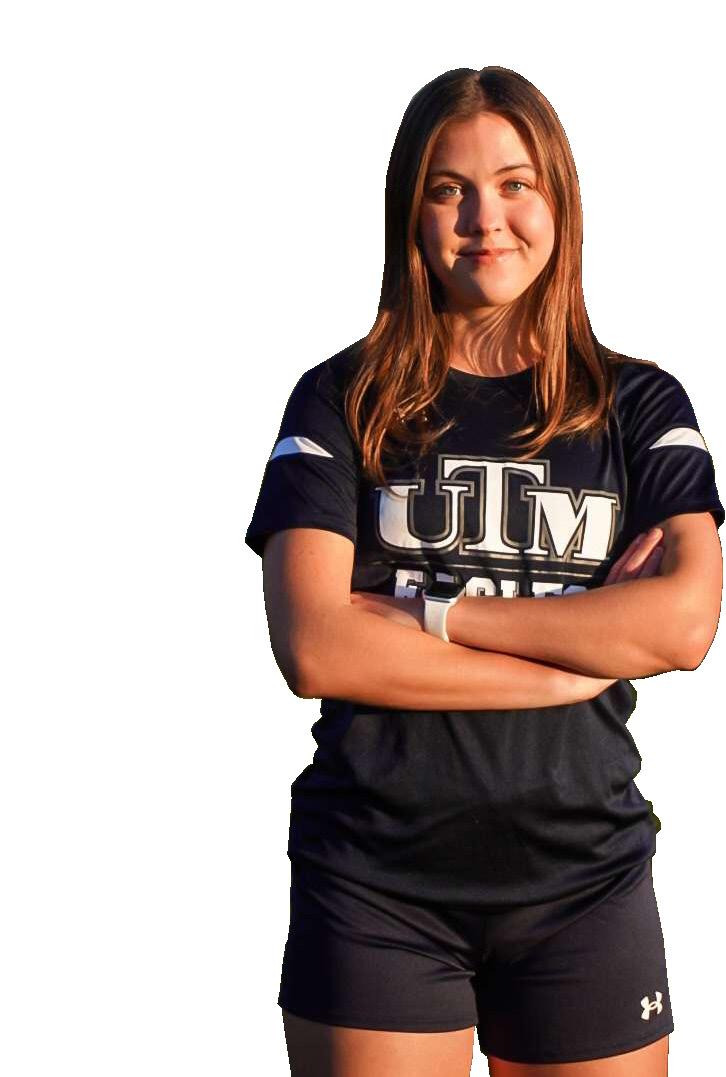
During her recovery, Sevcik lost all her muscle mass, as well as a lot of weight. “I want ed to […] become strong again so […] I started working out and strengthening my ankle at home as well as going on outdoor runs,” she shares. Running filled the athletic void that the lack of soccer created in her life. She took this new activity seriously—so much so that she became a marathon runner. In early 2021, Sevcik ran two 10-kilometer races, one 15-kilometer race, and a half marathon.
“If it wasn’t for my dad who pushed me to never quit, I wouldn’t be where I am in soccer today.”
Inspired by how far she was able to go with running, Sevcik chose to push herself some more. In September of 2021, just over a year and a half after her ankle injury, Sevcik “trained like crazy” for a return to soccer. “I tried out for one of the best League 1 semi-professional teams,” she says, “and surprised myself by securing a spot on the team.”
During the summer, Sevcik played on her semi-profes sional team while also training for future marathons and races. This year, she has participated in two 10-kilome ter races and one half marathon. “I proved everyone who thought I wouldn’t be able to play again wrong,” she says. “I worked past my struggles and set my own boundaries; I didn’t want to be told what my boundaries were.”
With a fully recovered ankle, Sevcik gained all her muscle back and even saw an increase in her speed and endurance. “I now just wear matching ankle braces on both feet.”
Sevcik explains why it was so important to her to continue playing soccer despite the difficulties associated with her in jury, saying: “I am drawn to the mental aspect of the game,” she says. “When I step on the soccer field, for those 90 min utes, all that matters and all that’s on my mind is the game.”
“When I step on the soccer field, for those 90 minutes, all that matters and all that’s on my mind is the game.”
There are many people who are physically able to play soccer but can’t mentally. Sprinting when you’re tired, going in for a hard tackle, diving for a header, and performing a slide tackle take not only skill, but also heart. “I am going to play soccer as long as I’m physically able to,” Sevcik says. “Soccer allows me to push my limits mentally […] and teaches me that you can do anything you put your mind to.”
Sevcik has no plans of becoming a pro fessional player: “I truly believe that I have reached the peak of my athletic career. I will now use my experience in soccer to help me find a path to pursue once I gradu ate university,” she says. “I’ve realized that I continued to play soccer over the years out of pure love for the sport. I will continue to play semi-professionally […] and motivate those who […] think they have no way out” of adversity.
This year, as co-captain of University of Toron to Mississauga women’s soccer team, Sevcik made history. The team won the tri-campus soccer championship finals.
sports@themedium.ca
15
Editor | Alisa Samuel
Injury couldn’t stop her from becoming co-captain of the University of Toronto Mississauga women’s soccer team.
SAMIRA KARIMOVA/THE MEDIUM
The accumulative impact of concussions on athlete health
Chronic traumatic encephalopathy is a degenerative brain disease that plagues the world of contact sports.
Melody Yang Associate Sports & Health Editor
Concussions are common in contact sports like boxing, hockey, and football. Repeated concussions, however, can cause serious damage to the brain. Unless care is taken to monitor athletes’ post-concussion cognitive decline, the effects of chronic traumatic encephalopathy (CTE), for ex ample, slowly and discreetly take shape.
The widespread accumulation of tau proteins (proteins that indirectly support the structure of brain cells) leads to the onset of CTE. Dire changes in behaviour and cognitive function, such as memory loss, slowly emerge, as well as chronic depression.
processes, including impulse control. When the areas of the brain responsible for learning, memory, and emotional regu lation degenerate, such as the hippocampus and frontal lobe, they short-circuit. In athletes as young as 17, this level of CTE reveals focal lesions (traumatic changes in the brain) through high tau protein expression across the hippocampus.
All neurodegenerative diseases have a refractory period. This period is characterized by a lack of treatment and detec tion of disease due to “neuroplasticity.” Neuroplasticity refers to the brain’s ability to adapt to changes through the way it acts, or rather, reacts. It rewires itself. In a neurodegenerative context, neuroplasticity compensates for function loss, mak ing it imperative to seek preventative treatment for repeated head injuries.
CTE’s behavioural effects are long-term. Phillip Addams and Aaron Hernandez, both former NFL athletes, murdered their loved ones and then committed suicide theoretically because of executive function loss in late-stage CTE. “Ex ecutive function” is a term that describes all decision-making
According to a 2019 study of 296 college football athletes published in the Journal of Neurotrauma, the likelihood that a concussion will be reported clocks in at less than 50 per cent, while other injuries are reported at a rate of 80 per cent in college football athletes. Factors, such as an athlete’s social environment, pressure to continue the season, and a supportive coach can all distract an athlete from approach ing medical advice. The possibility of permanent physical impairment, including the potential dangers associated with CTE, places doubt on an individual’s decision to pursue head injury-prone sports.
With exam season coming up, would students and school staff who are stressed about grades and heavy workloads benefit from squeezing stress balls?
Irene Park Contributor
Norman Farb, a professor in the Psychol ogy department at the University of To ronto Mississauga (UTM), describes a stress ball as “any squishable or squeezable handheld object that is marketed as being a tool for reducing stress.”

The earliest known variation of the stressball existed during the reign of the Han Dy nasty (206 BC – 220 AD) in China, when sol diers held and hand-crushed walnuts to stay alert on the battlefield. In the Ming Dynasty (1368 – 1644 AD), Baoding balls replaced walnuts. Baoding balls are small metal balls often used in a pair. Ancient thought main tains that rolling these balls in your palm to rotate with one another relieves mental stress by stimulating hand pressure points. However, scientific evidence regarding this effect remains ambiguous.
In the 1980s, American TV writer Alex Carswell developed and commercialized the first modern stress ball. Compelled by a highly stressful personal experience, Car swell violently threw a pen at a framed photo, realized the release of channeling stress into movement, and eventually created a “squeez able stress relief aid” that manufacturers
would reinvent time and time again in the years to come.
Today, stress balls come in various shapes and styles. Some resemble things like icecreams and unicorns, and even have features like glow-in-the-dark material, fruity scents, and gel cores. They are usually made from polyurethane foam, making them cheap to buy and profitable for companies to produce.
“The advertising is that squeezing an ob ject helps direct ‘nervous energy,’” Profes sor Farb says. “It is based on the idea that demanding situations prompt a ‘stress re sponse’ in our bodies, which have evolved to deal with situational demands by prioritizing
Last year, a team of researchers at the Air Force Post-Graduate Dental School in Texas investigated the function of stress balls in dentistry. Alongside local anaesthesia for procedures like scaling and root planning (deep cleaning of the teeth), the researchers gave 20 adults stress-balls to freely squeeze throughout one of two treatment sessions. They then examined the patients for signs of relaxation or reduced stress through galvanic skin response (GSR).
The researchers wrapped the Velcro con nectors of a GSR sensor “around two differ ent fingers on the [participants’] hand oppo site the hand using the stress ball” to measure stress levels through sweat. Emotional re sponses, like anxiety, to sensory stimuli increase the skin’s ability to conduct an electric charge. “Sweat creates a low-re sistance path enabling the measurement of electric current,” say the researchers.
The results of the study showed no significant difference between the “withstress ball” treatment session and the “with out-stress ball” treatment session. Nearly half of the study participants were indifferent
Doctor Brock Chisholm from Doctify, a feedback health specialist centre, ar gues that stress balls can actually cause a person to feel more stressed. He ex
plains that in order to feel relaxed, muscles need to be relaxed. Continuously squeezing a stress ball causes muscles to tighten—a sign that the body is producing stress hormones like cortisol.
Orthopedic surgeon Aaron Daluiski from the Hospital for Special Surgery in New York adds that excessive use of stress balls may also lead to Carpal Tunnel Syndrome, a condition wherein the median nerve gets compressed when it travels from the wrist throughout the hand.
So, do stress balls help or hurt us? Accord ing to Professor Farb, it depends. “For grip strength training, a firm stress ball appears to have similar benefits to more expensive grip trainers or computerized dynamom eters,” he says, “which are recommended by the American Heart Association for reducing hypertension.”
However, for the general population, stress balls largely only generate a placebo effect.
“Feeling like you have something to ‘do’ with your stress could help reduce experi ential avoidance, leading to less procrastina tion and more engagement,” Professor Farb explains. “However, until someone studies a ‘stress ball training program,’ this is more theory than established evidence […] and if you become dependent on the ball and lose it, that can create problems.”
“Repeated concussions, however, can cause serious damage to the brain.”
16
The stress ball is one way to reduce stress—or so we are told
SABRINA MUTUC/THE MEDIUM
is unnoticeable—until it’s not

 Mari Khan Contributor
Mari Khan Contributor












 Editor | Kareena Kailass opinion@themedium.ca
Editor | Kareena Kailass opinion@themedium.ca











 Alisa Samuel Sports & Health Editor
Alisa Samuel Sports & Health Editor




 Larry Lau News Editor
Larry Lau News Editor
 Julia Skoczypiec Arts and Entertainment Editor
Julia Skoczypiec Arts and Entertainment Editor



